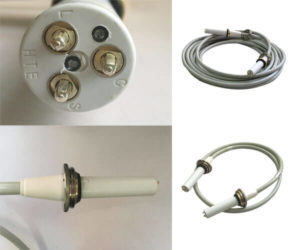A trading company consulted about our high-voltage cables
Recently, I received a call from a customer saying that I saw our high-voltage cable products on our company’s official website. I would like to know if there is any chance to cooperate in the future. They need to purchase a batch of cables for use. They are interested in seeing our elbow high-voltage cable products. They want to know the specific situation. They are vague about the difference between high-voltage cables and low-voltage cables, so they turn to customers to explain the situation of high-voltage cables. The components of a high-voltage cable from the inside to the outside include: conductor, insulation, inner sheath, filler (armor), and outer insulation. Of course, armored high-voltage cables are mainly used for underground burying, which can resist high-intensity compression on the ground and prevent damage from other external forces.
In addition, it reminds customers that there are many examples of high-voltage cable system failures due to construction quality. The main reasons are as follows:
The site conditions are relatively poor. High-voltage cables and connectors are manufactured in factories with high environmental and technological requirements, and the temperature, humidity, and dust on the construction site are not easy to control.
In the cable construction process, small slip marks will inevitably be left on the insulation surface. Semi-conductive particles and sand on the emery cloth may also be embedded in the insulation. In addition, due to the exposure of the insulation to the air during the joint construction process, the insulation will also absorb moisture. All these leave hidden dangers for the long-term safe operation of high-voltage cables.






